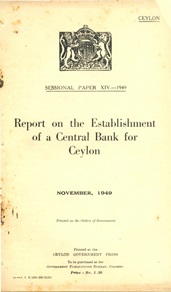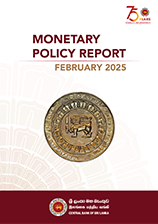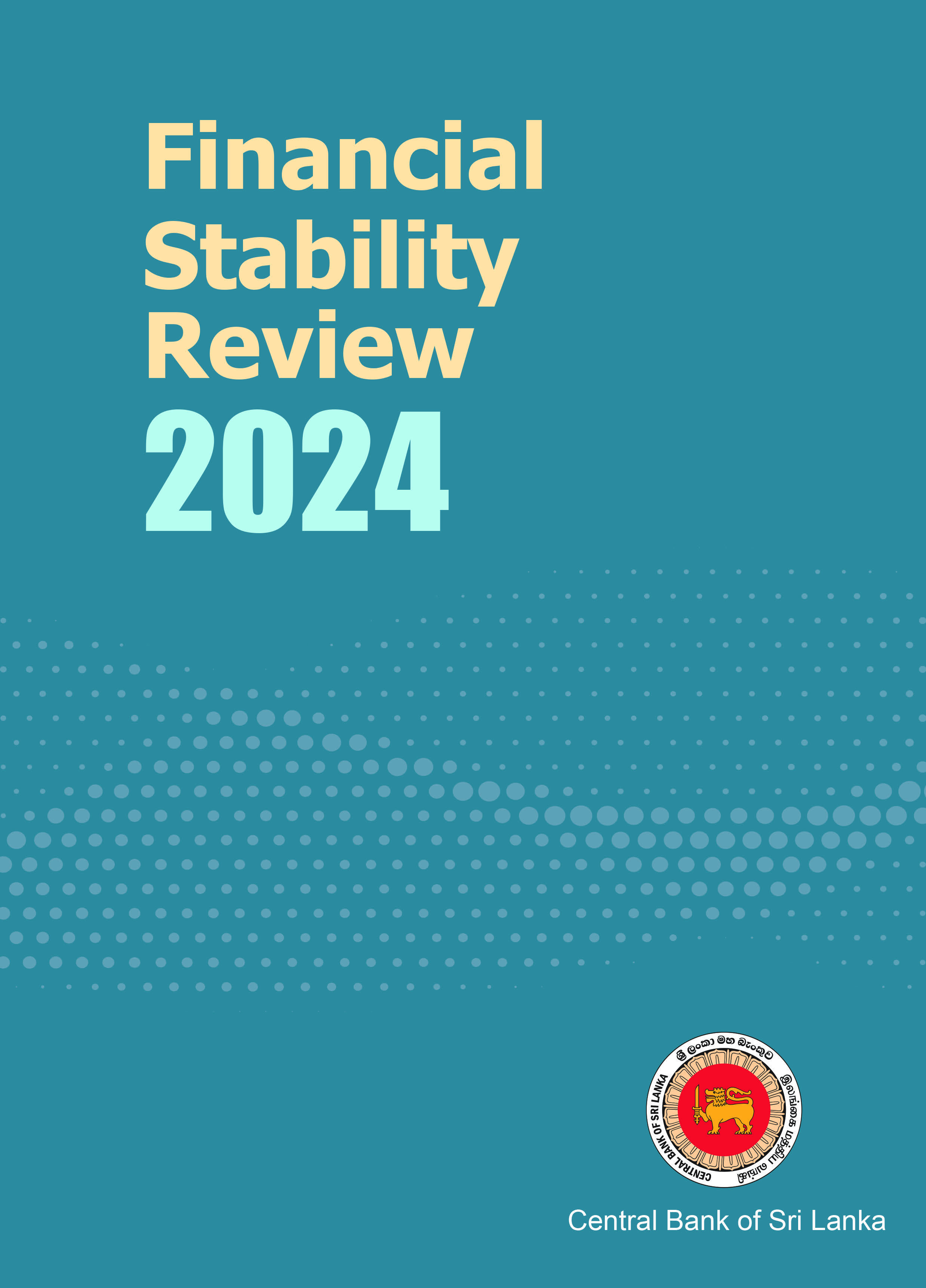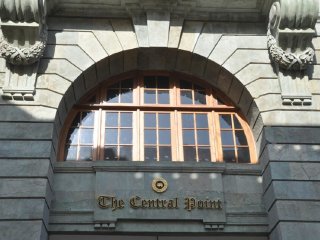Frequently Asked Questions (FAQs)
Monetary Policy
What is Monetary Policy?
Monetary policy is the process by which the central bank influences the cost (i.e., interest rate) and availability of money (i.e., money supply/liquidity) with a view to attaining price stability.
Who is responsible for the conduct of monetary policy?
In Sri Lanka, the authority responsible for the formulation and implementation of monetary policy is the Central Bank of Sri Lanka (CBSL). With the enactment of the Central Bank of Sri Lanka Act (CBA) No. 16 of 2023, with effect from 15 September 2023, monetary policy decisions are taken by the Monetary Policy Board of the Central Bank.
The Monetary Policy Board is charged with the formulation of monetary policy of the Central Bank and implementation of a flexible exchange rate regime in line with the flexible inflation targeting framework in order to achieve its prime objective of maintaining domestic price stability.
The Monetary Policy Committee (MPC) of the CBSL, chaired by the Governor, is responsible for providing monetary policy recommendations to the Monetary Policy Board. The primary function of the MPC is to evaluate emerging economic developments and macroeconomic projections and to make recommendations on appropriate future directions of monetary policy for consideration by the Monetary Policy Board with a view to achieving the primary objective of the Central Bank of ensuring domestic price stability.
What is the current monetary policy framework of the CBSL?
At present, the Central Bank conducts monetary policy in line with a flexible inflation targeting (FIT) framework, aimed at maintaining inflation at the targeted levels as determined in the Monetary Policy Framework Agreement, while supporting economic growth to reach its potential.
The current Monetary Policy Framework Agreement between the Government and the Central Bank of Sri Lanka was published in the Government Gazette on 05 October 2023
What is flexible inflation targeting (FIT)?
Monetary policy conducted under a flexible inflation targeting (FIT) framework is aimed at stabilising inflation around the inflation target while minimising disturbance to the real economy. At present, the Central Bank conducts monetary policy in line with a flexible inflation targeting (FIT) framework, with the aim of maintaining inflation at 5 per cent as determined by the Monetary Policy Framework Agreement (MPFA) between the Minister of Finance and the Central Bank (Government Gazette).
What are the instruments used by the CBSL to conduct its monetary policy?
The Central Bank possesses a wide range of tools to be used as instruments of monetary policy. The main instruments are the Overnight Policy Rate (OPR), Open Market Operations (OMOs), Standing Facilities and the Statutory Reserve Requirement (SRR). In addition, quantitative restrictions on credit, ceilings on interest rates, moral suasion as well as communication and forward guidance can also be used. The Central Bank has the independence of choosing appropriate instruments to conduct monetary policy.
What is OPR?
Overnight Policy Rate (OPR) is the policy interest rate of the Central Bank under the single policy interest rate mechanism (w.e.f. 27 November 2024). It is the primary monetary policy instrument that signals the Central Bank’s monetary policy stance. OPR is periodically reviewed and adjusted appropriately, if necessary, by the Monetary Policy Board of the Central Bank, to guide the interest rate structure of the economy with a view to achieving the desired path of inflation.
Following the introduction of OPR, the use of the Standing Deposit Facility Rate (SDFR) and the Standing Lending Facility Rate (SLFR) as policy interest rates were discontinued w.e.f. 27 November 2024. SDFR and SLFR, which are applicable for standing facilities of the Central Bank, are linked to OPR with a pre-determined margin set by the Monetary Policy Board. The SDFR and SLFR continue to provide the lower bound and upper bound, respectively, for interbank call money rates.
What is the Average Weighted Call Money Rate (AWCMR)?
AWCMR is a weighted average rate of interbank call money transactions, the overnight unsecured transactions among Licensed Commercial Banks (LCBs) and it serves as the operating target of the CBSL’s current flexible inflation targeting framework.
What are Open Market Operations?
Open Market Operations (OMOs) are the market based monetary policy operations conducted by the CBSL using acceptable securities to maintain market liquidity at appropriate levels in line with the monetary policy stance of the CBSL. The CBSL can use government securities and its own securities for this purpose.
What is the role of the Stakeholder Engagement Committee?
The Stakeholder Engagement Committee (SEC) consists of a cross section of stakeholders including eminent professionals, academics, and the private sector personnel. The primary role of this high-level consultative Committee is to represent the views and sentiments of the private sector and academia on economic conditions and the outlook, considering the overall economic development, particularly in the monetary and financial sectors of the economy. Further, SEC is expected to provide feedback from the viewpoint of the stakeholders of the economy on the policy measures adopted by the CBSL, thus enabling the CBSL to make informed policy decisions in a more consultative manner.
What are the key monetary aggregates in Sri Lanka?
The main definitions of monetary aggregates used in Sri Lanka are as follows;
- Reserve Money/Monetary Base/High Powered Money – Includes currency outstanding (currency held by the public and currency with LCBs), LCBs’ deposits with the CBSL and government agencies’ deposits with the CBSL.
- Narrow money (M1) - Includes currency held by the public and demand deposits held by the public with LCBs.
- Broad money (M2) – Includes narrow money supply and time and savings deposits held by the public with LCBs.
- Broad money (M2b) – Includes narrow money supply, time and savings deposits held by the public with LCBs and also includes a part of foreign currency deposits of LCBs.
- Broad Money (M4) - Includes broad money (M2b) supply and time and savings deposits held by the Licensed Specialised Banks (LSBs) and Licensed Finance Companies (LFCs).
What is the Average Weighted Lending Rate (AWLR)? / What is the Average Weighted Prime Lending Rate (AWPR)?
AWLR is calculated by CBSL, on a monthly basis, based on interest rates of all outstanding rupee loans and advances extended to the private sector by LCBs.
AWPR is calculated by CBSL, on a weekly basis, based on lending rates offered by LCBs to their prime customers during a particular week. A monthly average of weekly AWPR is also published.
What is the Average Weighted Deposit Rate (AWDR)? / What is the Average Weighted Fixed Deposit Rate (AWFDR)?
AWDR is calculated by CBSL, on a monthly basis, based on the weighted average rates of all outstanding interest bearing rupee deposits held with LCBs.
AWFDR is also calculated, on a monthly basis, by CBSL based on weighted average rates of all outstanding interest bearing rupee time deposits held with LCBs.
What is the Average Weighted New Deposit Rate (AWNDR)? / What is the Average Weighted New Lending Rate (AWNLR)?
AWNDR is calculated by CBSL, on a monthly basis, based on weighted average rates of all new interest bearing rupee deposits mobilised by LCBs during a particular month.
AWNLR is calculated by CBSL, on a monthly basis, based on interest rates of all new rupee loans and advances extended by LCBs to the private sector during a particular month.
What is the Legal/Market Rate of Interest?
The Legal Rate is defined under the Civil Procedure Code (Amendment) Act No. 6 of 1990 and is applicable to any action for the recovery of a sum of money. The Market rate is defined under the Debt Recovery (Special Provisions) Act No. 2 of 1990 and applies only in relation to actions instituted by lending institutions for the recovery of debt exceeding Rs. 150,000 arising out of commercial transactions, where there is no agreed rate of interest.
The Market Rate and the Legal Rate for a year are computed in December of the preceding year by the Central Bank and are announced through a Gazette notification.
What is the purpose of the monetary policy framework agreement between the Minister of Finance and the Central Bank of Sri Lanka?
A monetary policy framework agreement usually represents a formal agreement between the government, often led by the Ministry of Finance, and the country's central bank. Its primary objective is to create a structured framework for defining and adhering to a specific inflation target, which is a firm commitment shared by both the central bank and the government. This agreement plays a vital role in building trust and offering a well-defined path toward attaining macroeconomic stability.
The current Monetary Policy Framework Agreement between the Government and the Central Bank of Sri Lanka was published in the Government Gazette on 05 October 2023
What is the current inflation target, how to measure if the Central Bank has failed to achieve the inflation target, and what will happen if the Central Bank fails to meet the inflation target?
The current inflation target is to maintain the quarterly headline inflation rate at the target of 5 per cent. Here, the “Quarterly headline inflation rate” refers to the simple average of the year-on-year percentage changes in the monthly CCPI for the three months of the corresponding quarter, while “CCPI” means the Colombo Consumer Price Index published by the Department of Census and Statistics, Sri Lanka.
If the headline inflation rate deviates more than +/- 2 percentage points from the inflation target of 5 per cent for two consecutive quarters, the Central Bank is said to have failed to achieve the inflation target.
If the Central Bank has failed to achieve the inflation target, the Central Bank is obligated to submit a report to the Parliament through the Minister of Finance with the following information, which shall also be made available to the public.
(a) the reasons for the failure to achieve the inflation target;
(b) the remedial actions proposed to be taken by the Central Bank; and
(c) an estimate of the time-period within which the inflation target shall be achieved.










